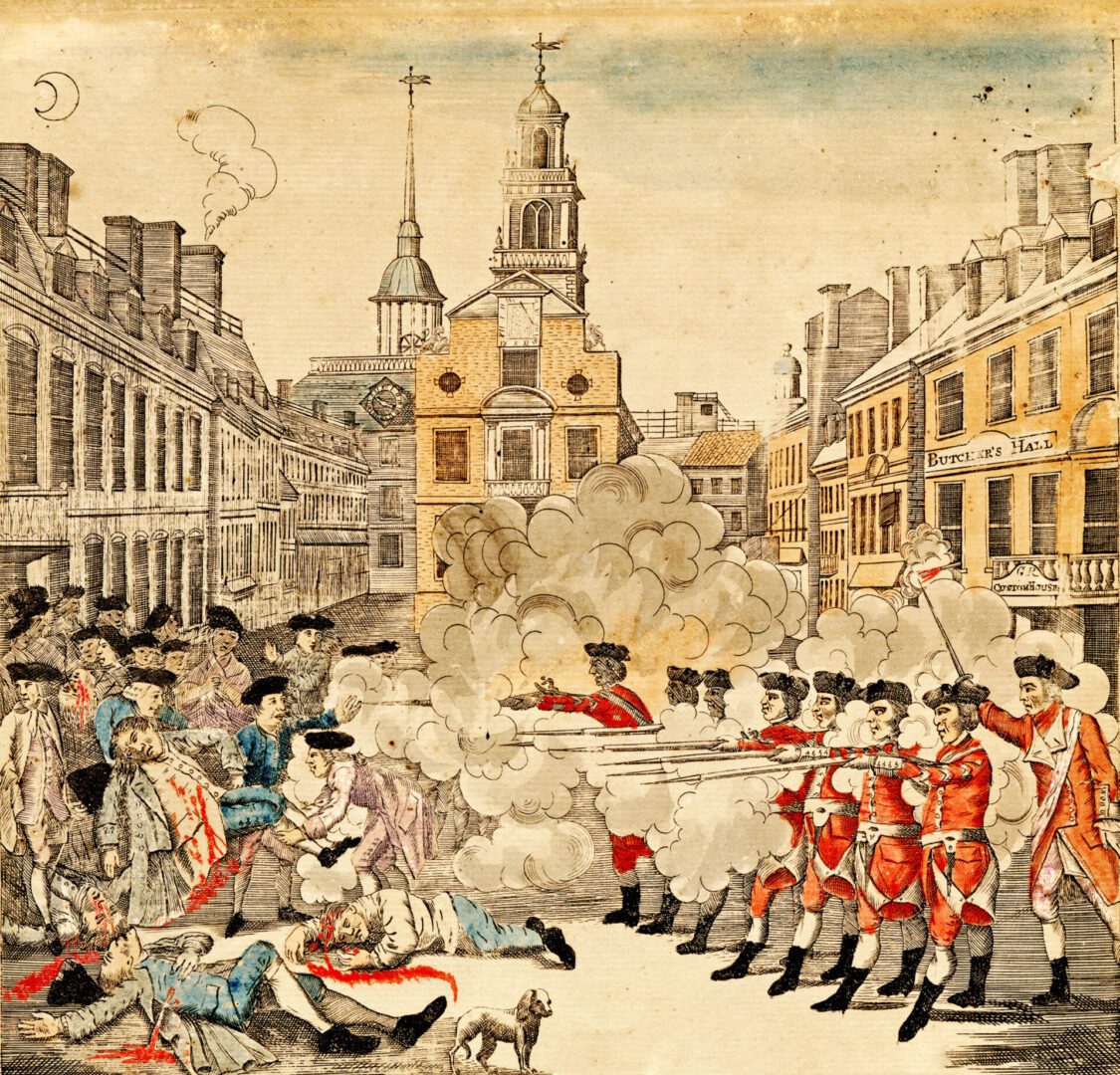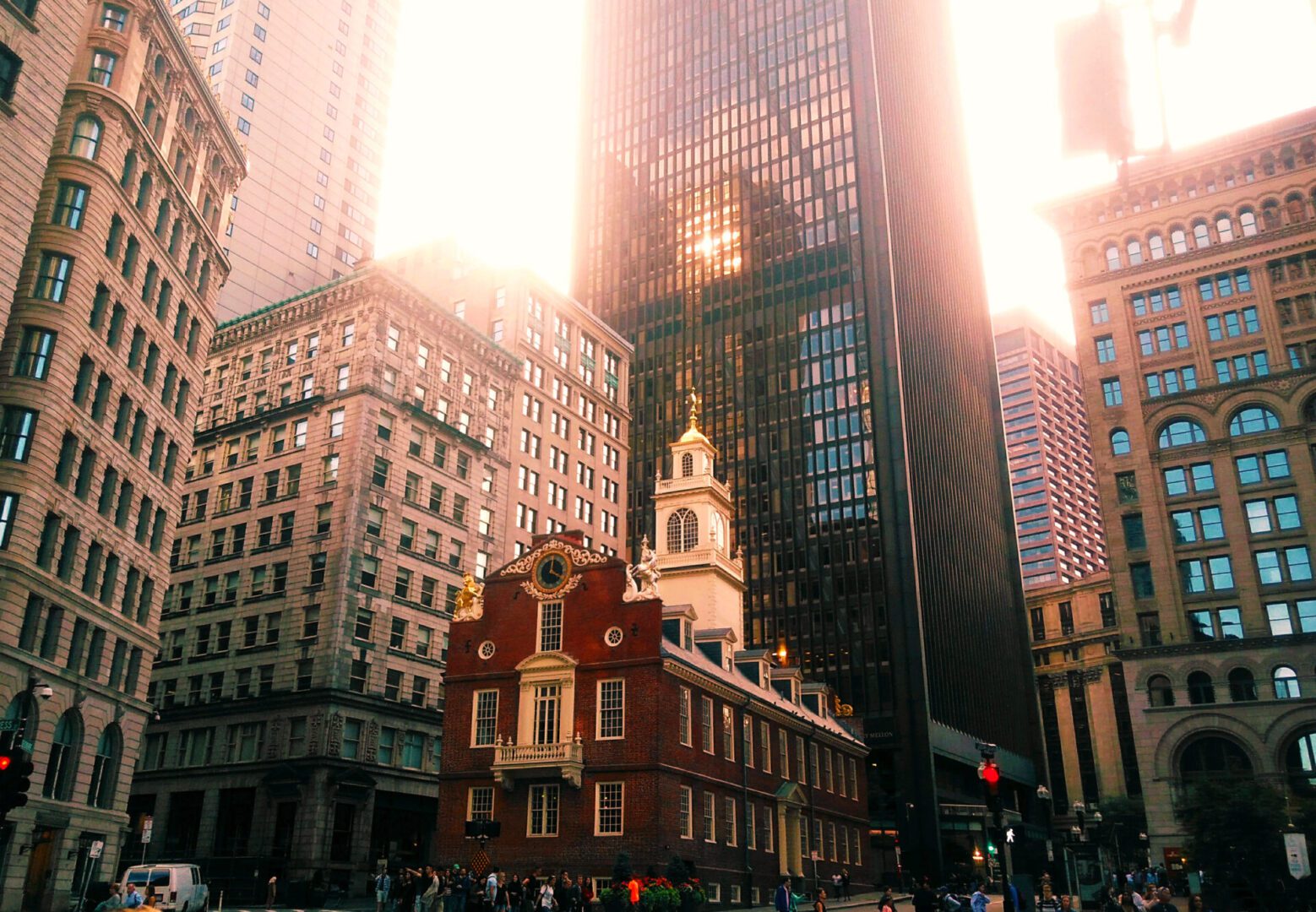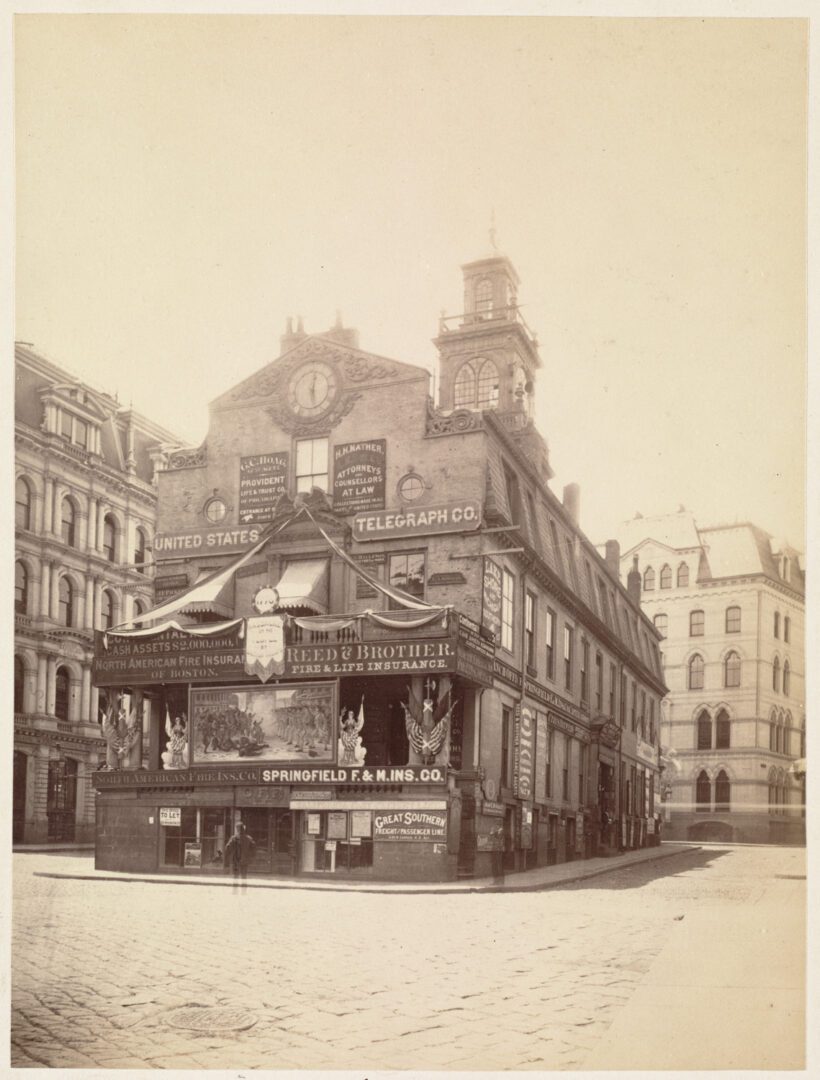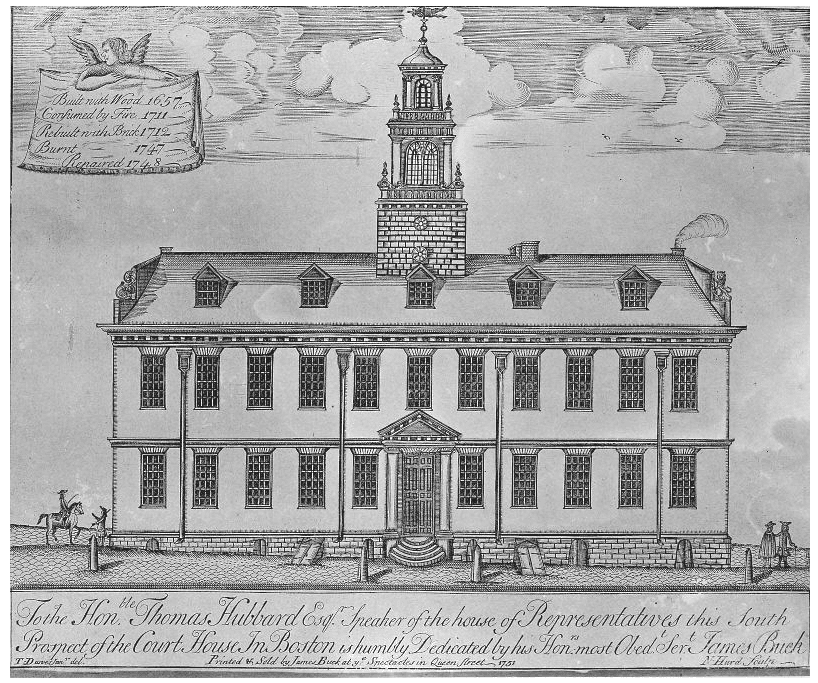




Constructed in 1713, the Old State House (known as the “Town House” until the Revolution) was the center of royal government in Massachusetts Bay Colony and the focal point for many of the Revolution’s most dramatic events. The Boston Massacre unfolded in its shadow on March 5, 1770, and eyewitness accounts were collected inside in the subsequent days. The Declaration of Independence was read for the first time in Boston from the balcony of the Old State House on July 18, 1776. It then became the first capitol of the Commonwealth of Massachusetts until 1798. The Old State House is the oldest surviving public building in Boston.
Throughout its history, the courts and city, state, and colonial government met at the Old State House. The second floor housed the Royal Governor’s Council Chamber, Representatives’ Hall, and the Supreme Judicial Court. The assembly that met in Representatives’ Hall was one of the most democratic bodies in the colonial world, and featured the first public gallery in the Western world, where citizens could observe the government in action.
Today, standing amid the skyscrapers of downtown Boston, the Old State House tells the story of Boston’s role in the American Revolution and its connection to the American struggle to create and sustain a free society. Operated by Revolutionary Spaces and owned by the City of Boston, the Old State House is a designated a National Historic Landmark, a Boston Landmark, and a site within the Boston National Historical Park on the Freedom Trail.
Take 3D tour of the Old State House, including areas of the building that are not accessible to the public. Start exploring!
Historic Moments at the Old State House
1713
The brick Town House is built in 1713, replacing the previous wooden Town House, which had burned in a fire in 1711. The Town House would serve as the seat of colony government until 1776.
1748
The interior of the Town House is rebuilt and the iconic lion and unicorn statues are installed.
1761
James Otis argues against the Writs of Assistance before the Superior Court, marking the first major protest against British laws. The writs permit customs officials to search for contraband goods without probable cause. Otis makes a four-hour speech in the Council Chamber of the Town House, defending the rights of citizens. After conferring with authorities in England, the court upholds the writs.
1761
The accession of King George III is proclaimed from the balcony of the Old State House.
August 1765
The Loyall Nine (later on known as the Sons of Liberty) storm into the first floor of the Old State House to protest the impending Stamp Act.
March 5, 1770
A confrontation between British soldiers and Bostonians takes place in the square in front of the Town House, leaving five people dead and many more wounded. This deadly event came to be known as the “Boston Massacre.” It was some of the first bloodshed in the years before the Revolution and marked a dramatic escalation in the disputes between the British and colonists.
July 18, 1776
The Declaration of Independence is read by Colonel Thomas Crafts for the first time in Boston from the balcony of the Old State House.
1776-1798
After the American Revolution, the Old State House serves as the seat of the Massachusetts state government until 1798 when it moves to the Massachusetts State House on Beacon Street.
1780
The election of John Hancock as the first governor of the new state of Massachusetts is announced from the balcony.
1830-1841
The Old State House serves as Boston City Hall. In 1830, Isaiah Rogers alters the building's interior in a Greek Revival style, most notably adding the spiral staircase that remains today.
1831
Samuel Willard clock is installed. This clock is still operational and wound by hand on a weekly basis.
1832
The Old State House is damaged by fire in 1832.
October 21, 1835
William Lloyd Garrison, the editor of the abolitionist paper The Liberator, is given temporary refuge in the Old State House after being chased by a violent mob. Garrison is eventually driven to the Leverett Street Jail, where he is protected overnight but charged with inciting a riot.
1841-1881
The Old State House is adapted by numerous shops and offices for commercial use. During this time, the spiral staircase is removed and the interior remodeled several times, while the exterior becomes covered in advertisements and signs.
1879
A group of determined citizens form the Boston Antiquarian Club to preserve and steward the Old State House.
1881
The Boston Antiquarian Club reorganizes as the Bostonian Society and creates a museum of Boston’s history inside the Old State House. Recreations of the former lion and unicorn statues are reinstalled on the building.
1882
Boston Massacre Memorial Medallion is installed.
1901
The copper lion and unicorn statues rendered by coppersmith, Moses H. Gulesian are installed.
1903-1904
The State Street Station is built underneath the Old State House.
1921
Old State House collection and attic spaces are damaged by fire.
July 11, 1976
Queen Elizabeth II visits Boston for the United States’ bicentenary celebrations, giving a speech outside the Old State House.
1960
The Old State House is designated a National Historic Landmark.
1994
The Old State House is designated a Boston Landmark by the Boston Landmarks Commission.
2014
The iconic lion and unicorn statues atop the east parapets of the Old State House are repaired.
2020
The Bostonian Society merges with the Old South Association to form Revolutionary Spaces.

